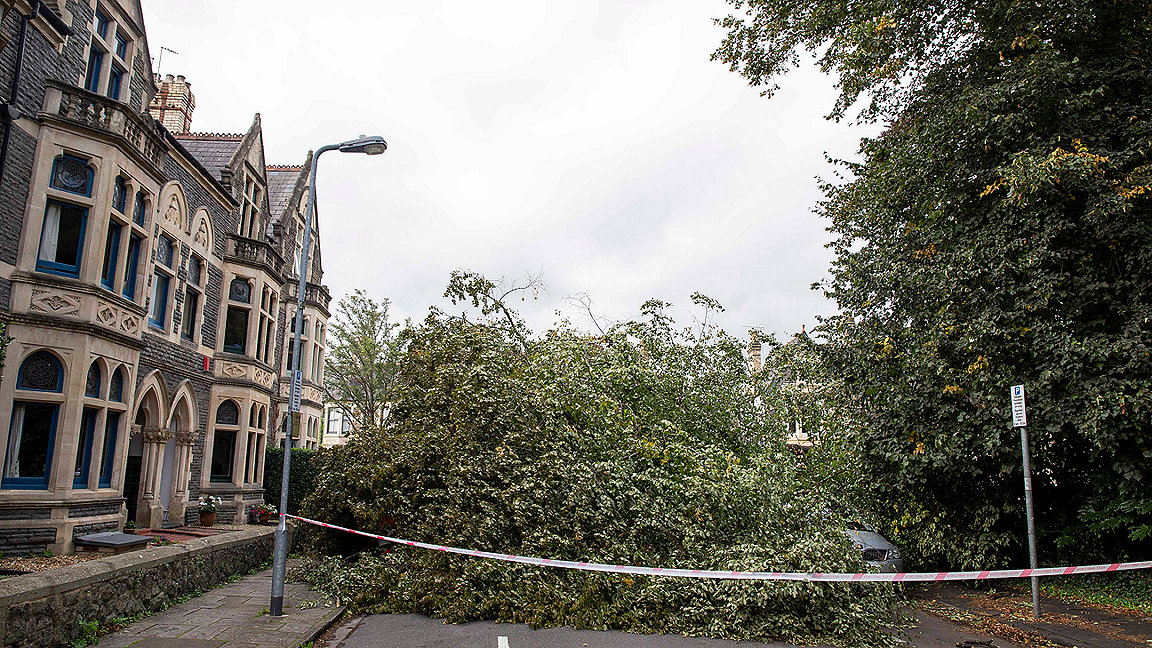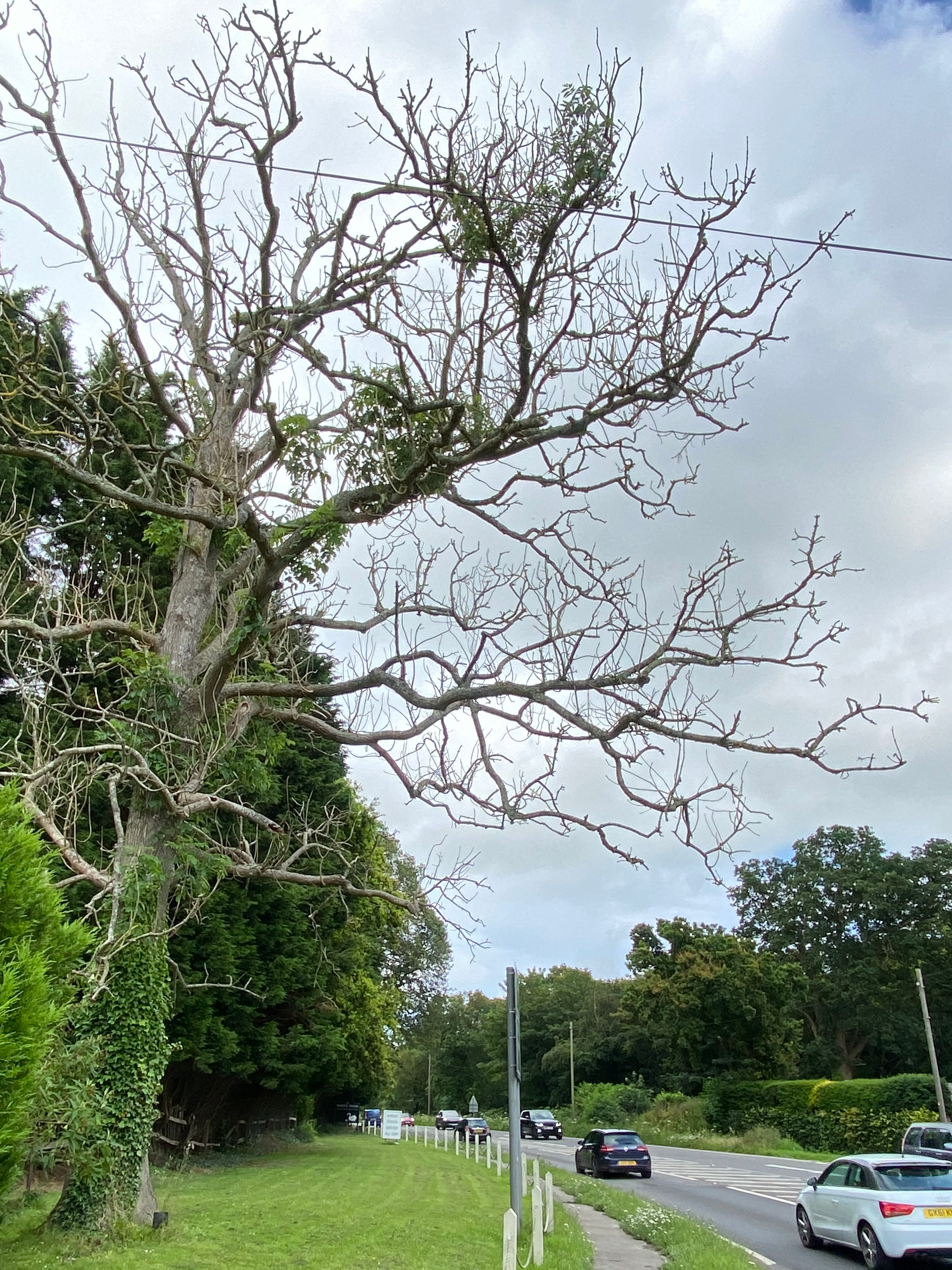
Fallen tree blocks road in Cardiff after strong winds from Storm Francis Photographer: ComposedPix, Shutterstock
Trees provide multiple societal benefits on a local and national scale, in both urban and rural areas. However, as trees and people are squeezed closer together, they can also cause serious harm.
When trees fail and cause harm, dutyholders who are responsible for tree safety – whether property managers or tree owners – must explain what they did to reduce risks, if they are to refute criminal prosecution and civil liability in the courts.
The big question for dutyholders is: how much is enough? Too little and the courts may find against them, with all the financial, reputational, and emotional harm that brings. Too much, and costs can escalate out of control. So where does the balance lie?
'The big question for dutyholders is: how much is enough?'
The detailed design of a tree risk management regime is influenced by a range of factors including published legal decisions, new technical publications, current government guidance, emerging tree health issues that affect safety, and the experience of practitioners who routinely work with trees.
This framework is constantly evolving as practical lessons are learnt, new research is published, and emerging societal trends are expressed through court decisions.

At first glance, the Cavanagh judgment and subsequent appeal would seem to suggest that trees should be checked every 18 months to two years to avoid liability. This would represent a significant increase in checking for many dutyholders, and could substantially increase the cost of their regimes.
However, the Court of Appeal was only looking at findings of fact relating to the specific circumstances in January 2012; namely for a large, isolated lime tree in an area of high occupancy. Although this case will be treated as a legal precedent, current checking frequencies of three to five years for the wider tree population are likely to remain defensible if individual trees that may come under the judgment are identified for more frequent checks.
Ash trees now lie outside this general rule because of dieback disease and they must be treated differently. It is well documented that once ash trees begin to decline, they become vulnerable to secondary pathogens and can rapidly deteriorate.
Evidence is still being evaluated on how quickly the disease causes this to happen, but checking every two years may be necessary once the disease has resulted in more than 50% defoliation. This rate is subject to ongoing evaluation by the Forestry Commission, and duty holders should check regularly for updates to the standing advice.
The two PFD reports mentioned above have highlighted deficiencies in training of staff responsible for checking trees in the recognition of relevant hazards.
Formal and cost-effective basic or refresher courses has been available from Lantra since the early 2000s so the courts may take a dim view of inadequate training for staff who are charged with checking trees for hazard.
The Stear inquest and PFD report identified the lack of a formal tree strategy as a contributory factor in the death, and criticised Wirral Council for not having one. Criminal prosecution and a fine followed, and the council invested more than £1.25m to rectify the deficiency.
It seems that corporate dutyholders, such as local authorities, that have to manage large portfolios may receive harsh criticism from the courts if harm arises as a result of not having a formal tree risk management policy.
This inquest and subsequent proceedings also severely criticised Wirral Council for not reacting properly to a near-miss event the previous year, where a large tree fell on to a major road but did not cause any harm.
An administrative mechanism to record when near misses happen, investigate them thoroughly, identify where risks could be reduced, and implement changes to procedures to reduce those risks, is advisable.
UK highway authorities have millions of trees to manage, and it is now widely accepted that driven checks can be effective at picking up many obvious hazards.
However, observers cannot always see obvious hazards from the highway. The Warren inquest and subsequent PFD report focused on the inadequacies of driven checks and noted that they must be properly designed and carried out by staff trained in the identification of tree hazards.
It is therefore unlikely that such checks would be deemed adequate as the sole means of managing the safety of highway trees; but they would be acceptable as part of a wider regime that also involved checks carried out on foot.
Since 2017 John Lockhart FRICS has represented RICS and the National Tree Safety Group (NTSG) on DEFRA's H&S task force for ash dieback. Last autumn, in his role as non-executive director on the Forest Services Board, John was asked by DEFRA to chair a taskforce to look specifically at the road closure issues associated with ash dieback.
The task force comprised key stakeholders across central government, local government and landowner groups. It was determined that the group would review the issues associated with closing roads to deal with dangerous trees, and not other issues such as tree preservation orders (TPOs), felling licences and protected species licences. The scope was defined to consider barriers for both private landowners and local authorities and to obtain examples of best practice that can be used to guide future policy for England only. The final report has now been released and copies are available.
The task force would also be happy to receive any feedback from members in relation to this issue which will undoubtedly be one of the key challenges for rural property over the next decade. For the report and to provide feedback, email Fiona Mannix.
_JB.png)
Jeremy Barrell is managing director of Barrell Tree Consultancy and an accomplished expert witness
Contact Jeremy: Email | Twitter
A full version of this article appeared as 'The implications of recent English legal judgments, inquest verdicts, and ash dieback disease for the defensibility of tree risk management regimes' in Arboricultural Journal, © 2021 Jeremy Barrell, published by Informa UK Limited, trading as Taylor & Francis Group.
Related competencies include: Management of the natural environment and landscape
LAND JOURNAL
Nicky Southam 11 July 2024
LAND JOURNAL
David Lewis MRICS 21 June 2024